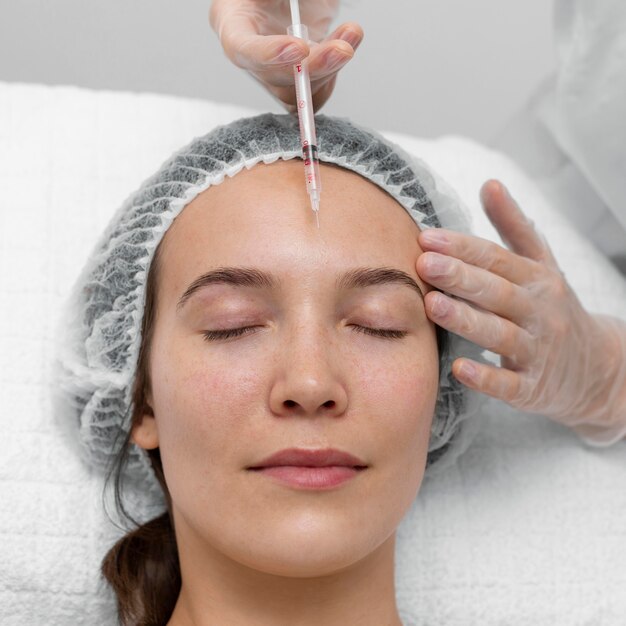What Are the Risks of Liquid Facelift? Know Before You Go
The Liquid facelift in Abu Dhabi has gained immense popularity for its ability to rejuvenate the face without the need for invasive surgery. While the benefits are enticing, it’s crucial to be aware of the potential risks and side effects associated with the procedure. This article will delve into the risks of a liquid facelift so you can make an informed decision before undergoing treatment.
Understanding Liquid Facelift
A liquid facelift involves the use of dermal fillers and neuromodulators such as Botox to restore volume, smooth out wrinkles, and lift specific areas of the face. It is a non-surgical approach that offers immediate results and minimal downtime. However, like any cosmetic procedure, it is not without its risks.
Common Risks and Side Effects
1. Bruising and Swelling
One of the most common side effects of a liquid facelift is bruising and swelling at the injection sites. While these effects are usually temporary, they can be concerning for some patients.
2. Pain and Discomfort
Some patients may experience mild to moderate pain or discomfort during and after the procedure. This is generally short-lived and can be managed with over-the-counter pain relief.
3. Allergic Reactions
Though rare, allergic reactions to the materials used in fillers can occur. Symptoms may include redness, itching, or swelling. It's essential to inform your practitioner of any known allergies prior to treatment.
4. Asymmetry
In some cases, the results may not be perfectly symmetrical, leading to uneven facial features. This can happen if the injectables are not administered evenly or if the facial structure is not balanced.
5. Lumps or Bumps
After the injection, some patients may develop small lumps or bumps under the skin. While these usually resolve on their own, they can be a source of concern for some individuals.
6. Vascular Complications
In rare instances, injected filler can inadvertently enter a blood vessel, leading to vascular complications. This may cause skin necrosis (tissue death) or even vision problems if blood flow to the eyes is compromised. Prompt treatment is crucial in such cases.
7. Migration of Fillers
Sometimes, dermal fillers can migrate from the original injection site, leading to an unnatural appearance. This may require additional treatment to correct.
Choosing a Qualified Practitioner
1. Board Certification
Always choose a board-certified practitioner with extensive experience in administering injectables. This can significantly reduce the risk of complications.
2. Reviews and Referrals
Look for reviews or ask for referrals to ensure your chosen provider has a good track record with liquid facelifts.
3. Consultation
Schedule a thorough consultation where you can discuss your concerns and expectations. A qualified practitioner will address any questions you have about risks and potential side effects.
Prevention Tips
1. Research
Educate yourself about the procedure, products used, and potential risks. Knowledge is your best ally in making informed choices.
2. Follow Pre-Procedure Guidelines
Your practitioner may provide specific instructions to minimize risks, such as avoiding blood-thinning medications before treatment.
3. Post-Procedure Care
Following aftercare instructions diligently can help mitigate risks and enhance your results.
FAQs About Liquid Facelift Risks
Q1: What are the most common side effects?
Common side effects include bruising, swelling, and mild pain at injection sites.
Q2: How long do side effects last?
Most side effects are temporary and usually resolve within a few days to a week.
Q3: What should I do if I experience severe side effects?
Contact your practitioner immediately if you notice severe side effects like intense pain, significant swelling, or changes in vision.
Q4: Are allergic reactions common?
Allergic reactions to fillers are rare but can occur. Discuss any allergies with your practitioner beforehand.
Q5: Can I prevent risks associated with liquid facelifts?
Choosing a qualified practitioner and following pre- and post-procedure care can significantly reduce risks.
Q6: Is a liquid facelift suitable for everyone?
While many people are candidates for liquid facelifts, individuals with certain medical conditions may need to avoid the procedure. A consultation can help determine your eligibility.
Q7: How can I ensure the best results?
Discuss your aesthetic goals openly with your practitioner and ensure they use high-quality products.
Q8: What if I’m unhappy with the results?
If you're unsatisfied with your results, consult your practitioner. Depending on the situation, adjustments or corrective treatments may be possible.
Conclusion
While a liquid facelift offers an excellent opportunity for facial rejuvenation, understanding the associated risks is essential for anyone considering this treatment in Abu Dhabi. By educating yourself and choosing a qualified practitioner, you can enhance your chances of achieving beautiful results while minimizing potential complications. Remember, a well-informed decision leads to greater satisfaction with your cosmetic choices.




Comments
Post a Comment